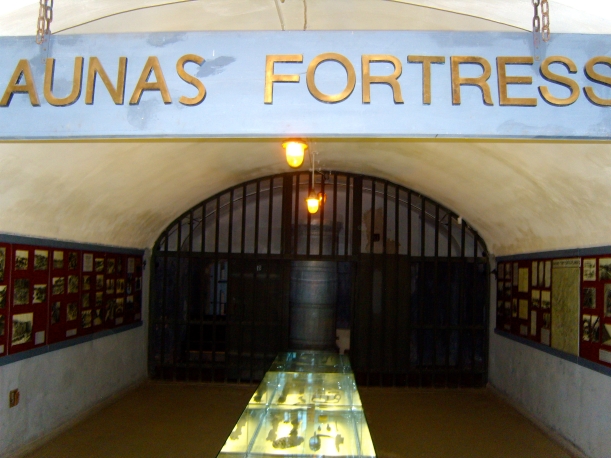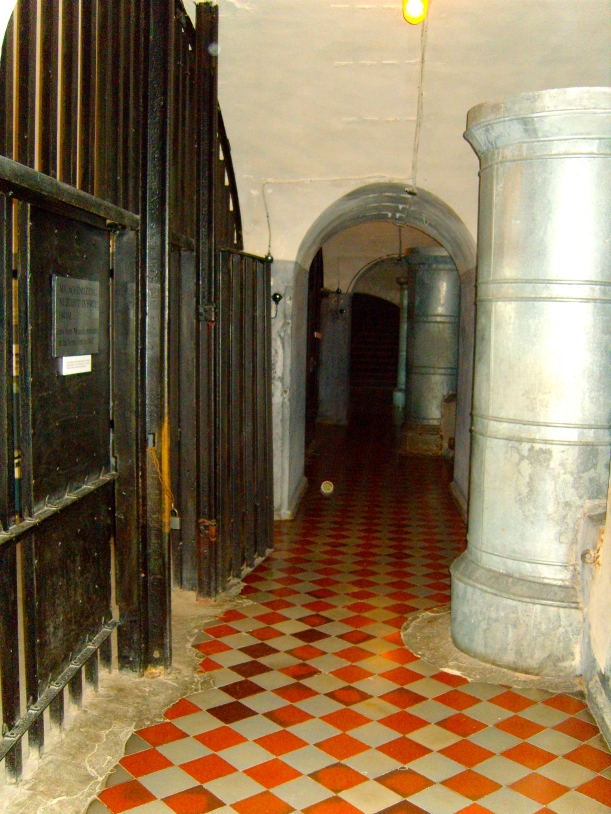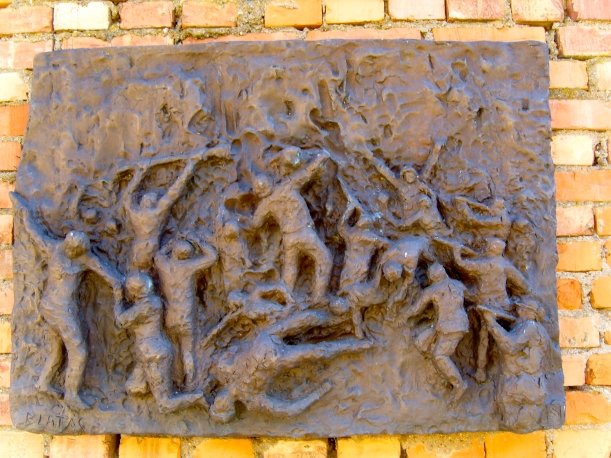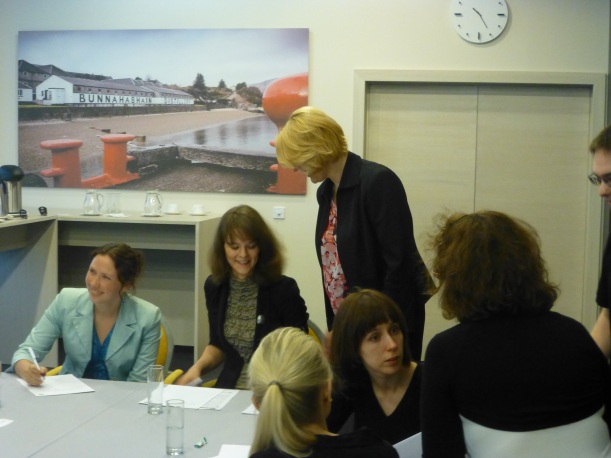After several visits to Lithuania starting in 2005 I decided it was time to brush up my knowledge of Lithuanian culture and improve my language skills (my weekly language lessons in England were useful but I wanted to immerse myself on a day-to-day basis).
I applied to Vytauto Didžiojo universitetas in Kaunas (VDU), found myself a flat on K.Donelaičio street and and headed off for a four week course. I was one of three “oldies” in the first couple of weeks with a veteran called Greg from America and a lady called Renata from Canada.

Greg had a flat next door to me, so that was nice, and the 30 or so Erasmus students from Poland, Germany, Czech Republic, Italy, Austria, Turkey, Latvia, and Russia, were kind to us as well.
The Summer School generated some publicity in the media although at that stage none of us could speak enough Lithuanian to make sense of a radio interview.
Apart from the language lessons – after taking a test I scraped into the intermediate class based on my tuition in England, although it was still a challenge – we visited various cultural sites including Vilnius, Trakai, Anykščiai, Rumšiškės, and Druskininkai.
Apart from that there was the day-to-day life; trying to understand when you actually cross a zebra crossing, discovering the area heating wasn’t working for hot water, and lifts never seeming to work – it was 60 steps up to my apartment and several floors at the university to the language lab.
The shock of Greg having his lap-top stolen out of his hands as we sat in the street in a wi-fi-zone. (The police officer we reported it to laughed when he found out where I was from “So all our criminals haven’t gone to the UK then?”).
 I’ll never forget seeing a bride dunked under water in a lake by her bridesmaids. I was already in the lake fully clothed so didn’t have my camera to hand.
I’ll never forget seeing a bride dunked under water in a lake by her bridesmaids. I was already in the lake fully clothed so didn’t have my camera to hand.
Each day I attended lessons which were interspersed with lectures, the language laboratory, and films. These were quite dark, mostly about life in occupied Lithuania.
I remember in particular the “The Children at the American Hotel‘ about teenagers who wanted to be rock’n roll stars attending a concert by rock band Ant and others surrounded by armed soldiers. It didn’t end well for them!
There was one humorous called “Nut Bread” and one about musicians in Bremen

 “Dievu Miskas” (Forest Gods) was about a prisoner’s life but the most horrific was “Vilnius Getas” about life in the jewish ghetto during the Nazi occupation. I was so moved by these last two I bought copies to bring home.
“Dievu Miskas” (Forest Gods) was about a prisoner’s life but the most horrific was “Vilnius Getas” about life in the jewish ghetto during the Nazi occupation. I was so moved by these last two I bought copies to bring home.
The last one we saw was a moody psycho-drama called “Whisper of Sin”.
Much as I love Vilnius I also enjoyed my time in Kaunas. Walking up Liberty Avenue (Laisvės alėja), the longest pedestrian street in the city, to the blue church of St Michael the Archangel (Orthodox in early Russian times – which is why some locals still call it the “garrison church” or Sober from when it served Kaunas Castle garrison – then Catholic, then a storehouse in soviet times, then back to Catholic). And at the other end a statue of the pagan god Pan. Entirely appropriate considering Lithuania was the last European country to convert to christianity! 

Enjoying the coffee shops and the local cafés – the Reval, the Metropolis, the Brothers, and one called the crazy house and all the restaurants had free wi-fi.
and the local cafés – the Reval, the Metropolis, the Brothers, and one called the crazy house and all the restaurants had free wi-fi.
I ate a lot of cold beetroot soup – šaltibarščiai  – and Balandėliai, cabbage leaves with a meat filling, (which is just like the Ukrainian Goluptsi I enjoy at church in England when I meet my Ukie friends). It means pigeon as the folded cabbage leaves look like one.
– and Balandėliai, cabbage leaves with a meat filling, (which is just like the Ukrainian Goluptsi I enjoy at church in England when I meet my Ukie friends). It means pigeon as the folded cabbage leaves look like one.
In Lithuania they also use it to refer to couples as love-birds!
We certainly enjoyed our food and the local beers – especially Švyturys made in Klaipeda.

And there was lots to see in Kaunas itself: the beautiful Town Hall called the “White Swan“ , and the beautiful church of St Peter and Paul and the nearby seminary.
, and the beautiful church of St Peter and Paul and the nearby seminary.

There is also world’s only Devils’ Museum  founded by Antanas Žmuidzinavičius . The museum contains a collection of more than 3,000 devils: creations of fine and applied arts, souvenirs and masks not only from Lithuania but from around 70 countries
founded by Antanas Žmuidzinavičius . The museum contains a collection of more than 3,000 devils: creations of fine and applied arts, souvenirs and masks not only from Lithuania but from around 70 countries
Vytautus the Great War Museum in Unity Square where veterans held parades around the square and clock tower on Sundays. The square has statues of people involved in the 19c revival of lLithuania
Thunder House was not far way and reminded me that that’s where the old border with Prussia used to be.
Kaunas castle 
 (which was being refurbished at the time) and used to be the home of the Russian garrison in the days of the Empire.
(which was being refurbished at the time) and used to be the home of the Russian garrison in the days of the Empire.
It’s a medieval castle and evidence suggests that it was originally built during the mid-14th century, in the Gothic style. Its site is strategic – a rise on the banks of the Nemunas River near its confluence with the Neris River.
The Kaunas hotel 55 Bar (named after the strength of home-brwd vodka or Samahon) where I used to go and listen to a singer with his guitar.
55 Bar (named after the strength of home-brwd vodka or Samahon) where I used to go and listen to a singer with his guitar.
Trips to the local Rimi 

 store (like Tesco) and the big Akropolis hypermarket, all within walking distance.
store (like Tesco) and the big Akropolis hypermarket, all within walking distance.
And everywhere there were statues. Some quite bizarre ones among the more serious sculptures.








We also visited some more memorable places – in a battered old bus with no air-conditioning (which explains why I jumped in a lake fully clothed when I got the chance) which had the habit of breaking down on distant highways – some of which I have already posted about.
Among our trips were:
A visit to the local linen factory, near the burned out barracks. Linen is big in Lithuania and I have several linen scarves I brought back (and I like linen blend shirts too). You can see the proprietor in traditional dress who made us very welcome with some snacks of cheese and Gira, the fermented rye bread drink, as she described the process of producing linen.
Linen is big in Lithuania and I have several linen scarves I brought back (and I like linen blend shirts too). You can see the proprietor in traditional dress who made us very welcome with some snacks of cheese and Gira, the fermented rye bread drink, as she described the process of producing linen.

The 9th Fort at Kaunas and the museum that was the office of the Japanese Consul who was Lithuania’s own Schindler. These were two contrasting examples of what happened in occupied Lithuania.
To Vilnius to Uzupis and the Hill of Three Crosses – both places I already knew quite well from my trips to Vilnius.
And trips to the famous spa town of Druskininkai (to drink the foul-tasting water among other things) and Gruto Parkas to see soviet sculpture at its best(or worst depending on your taste).
The horse museum in Anykščiai (Arklio muziejus) with all the wooden carvings, traditional crafts, old dwellings and a chance to actually sit on a horse.
The outdoor ethnographic museum at Rumšiškės with the amazing wood carvings.
And let’s not to forget the International Party!
When our graduation party arrived it was a sad day.
 Although happy to be going home I knew I would miss my fellow students and the support of the wonderful staff at the VDU.
Although happy to be going home I knew I would miss my fellow students and the support of the wonderful staff at the VDU.
I have been back since with my colleague and I would recommend a visit any time.

















































































